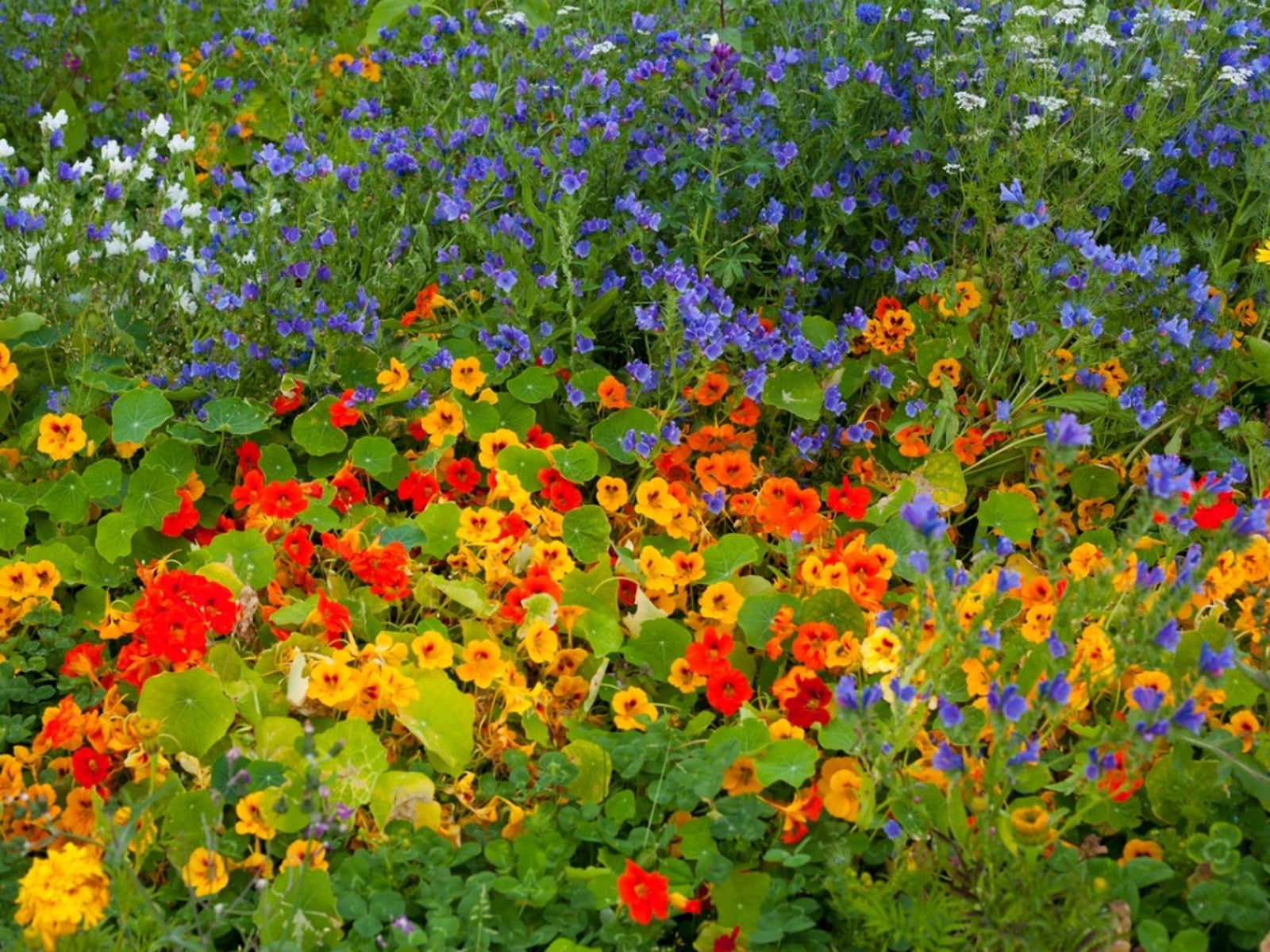Tips For Companion Planting Nasturtiums


Nasturtium flowers are loved for their colorful blooms and unique foliage. A valuable asset in both flower and vegetable gardens, nasturtiums are a tried-and-true companion plant. Though many growers first become interested in nasturtium's edibility, they’re often delighted to find that it may also help to repel many common garden pests. This is believed to be the result of certain aromatic chemicals that are released from the plant throughout the growing season.
Like other types of companion plant, nasturtium is best used within rows, or interplanted among several different crops. However, nasturtiums may be more compatible with certain plants than others.
Why Grow Nasturtiums as Companion Plants?
Companion planting is a technique that helps gardeners more efficiently utilize their planting space. Capitalizing on the concept of mutualism, different species of plants are grown in close proximity to one another as a means to create a polyculture. Companion plants serve a wide range of purposes: helping to attract pollinators, functioning as a trap crop, or even assisting in the uptake of nutrients.
While the fact-based evidence surrounding companion planting remains ambiguous, many experienced gardeners swear by its success. Diversity within companion gardens serves to enhance the backyard ecosystem, as well as help to keep plants healthy. Learning more about this concept can help you as a gardener to make informed decisions regarding the composition of beds and the placement of plants. One annual, the nasturtium, may be especially useful.
What to Plant with Nasturtiums
Most of the best companion plants for nasturtiums can be found in the vegetable garden.
Since nasturtium is known to help repel insects, it is naturally a good choice for growing near your cucumbers, pumpkins, squash, and various species of melons.
Nasturtiums will help to deter many of the most troublesome pests, including cucumber beetles, vine borers, and squash bugs. The plants are also believed to help repel aphids, cabbage loopers, flea beetles, Japanese beetles, and many more.
Gardening tips, videos, info and more delivered right to your inbox!
Sign up for the Gardening Know How newsletter today and receive a free copy of our e-book "How to Grow Delicious Tomatoes".
Experienced gardeners have not noted any change in behavior or deterrence of pollinators and/or other beneficial insects from the introduction of nasturtiums into the vegetable garden. In fact, nasturtium is also said to enhance production and flavor of certain plants, like radishes and cucumbers.
What Not to Plant with Nasturtiums
Though it is reported that the benefits of companion planting with nasturtiums are numerous, it’s a good idea to do some careful planning.
Most cultivars of nasturtium are low growing, with a mounding habit. Nasturtium plants may quickly become shaded by larger garden species.
The same can also be true of other companions which spread aggressively. Many herbs, like mint and thyme, will multiply quickly. In these instances, it’s not uncommon for the nasturtium to be outpaced and overgrown.
Be certain to avoid any vegetables that may share the same nutrient requirements of nasturtium plants. In these cases, the flowers may find themselves in competition with other plants for vital resources like water and nutrients within the soil.

Tonya Barnett has been gardening for 13 years. Flowers are her passion. She has transformed her backyard into a cut flower garden, which she regularly chronicles on her YouTube channel http://www.youtube.com/@tonyawiththeflowers.
-
 Terrifically Tubular Flowers For Hummingbirds: 9 Tube-Flowered Plants To Attract Hummers
Terrifically Tubular Flowers For Hummingbirds: 9 Tube-Flowered Plants To Attract HummersGrowing tubular flowers for hummingbirds helps you create the optimum feeding conditions for your winged friends. Here are nine tubed delights for hummers
By Tonya Barnett
-
 How To Grow Hydroponic Tomatoes For Fresh Indoor Harvests – No Soil Required
How To Grow Hydroponic Tomatoes For Fresh Indoor Harvests – No Soil RequiredLearning how to grow tomatoes in water is easy and allows you to harvest fresh-home-grown produce in every season without any mess.
By Ellen Wells